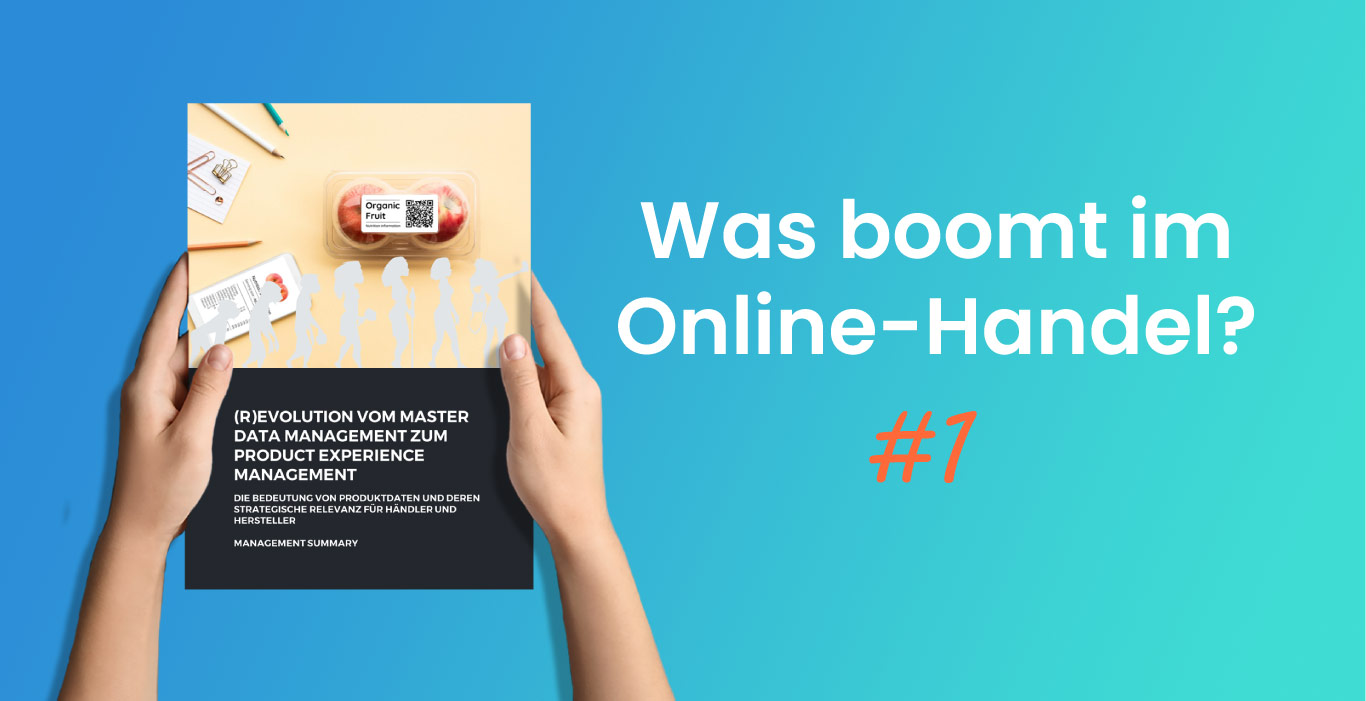Bring on the top product data - towards the buying experience on the web.
The very first transaction via an online shop? That was in 1994 on the US marketplace Netmarket. The payment was made online by credit card and the object of desire was a CD by Sting.
Today, after almost 30 years, we've really grooved our way into online shopping. We are pros at research, compare prices at record speed and analyse customer reviews with an expert's eye. For retailers and manufacturers, we consumers are a real challenge. That's why it's elementary to know: when do we click and when are we gone? A question that atrify got to the bottom of as part of a large-scale study together with ECC Cologne in autumn 2020.
The (r)evolutionary stages of product data
Our grandparents bought based on availability. Our parents bought brands. What about us? We buy experiences. And that's what the current study is all about "(R)evolution from Master Data Management to Product Experience Management".. The study investigated what requirements customers have for product information in order to make a purchase decision. And the requirements are becoming increasingly complex. The ideal standard program of product information is no longer sufficient. It is much more important to raise the topic to a strategic level in order to provide customers with a purchasing experience with high-quality and trustworthy product information. Because that's the only way to make a shoe out of it, or a new after-shave, or a leash for the dog.
According to the 2020 study, what product information will create a buying experience?
- Detailed product descriptions - incl. nutritional information
- High quality pictures and videos
- User Stories and Customer Reviews
- Labels and certificates
- Additional recommendation of equivalent products or suitable accessories
- Prices, delivery times and article numbers
- Language selection or a high-level translation of the description
What makes a good online shop?
The Corona pandemic in particular has shifted even more of the stationary trade to the online channel. Fast moving consumer goods in particular are booming online. For example, cosmetics, pet supplies or gardening tools. But why do customers leave retailer A and prefer to buy from retailer B, even though it is the same product at the same price?
According to the 2020 Order Study:
- 77% of respondents prefer to buy FMCG products in an online shop that provides comprehensive product information.
- For 65%, it is critical that information is consistent across many sources.
- 63% feel that an online shop with little product information is not trustworthy.
- 63 % of the respondents say that good product images are decisive for buying. Especially when the purchase involves games or craft supplies (79 %), DIY items (74 %) or garden tools and equipment (76 %).
One last thing: 27% of consumers pay less attention to the price if the pictures and the presentation in the online shop are particularly appealing. Often, a product is sold by several providers at the same time. Therefore, the product content must be communicated in a uniform manner everywhere. Therefore, search engines, price comparison sites, test reports and blogs must be taken into account!
Speaking of the blog: The next blog post on the aftify and ECC Cologne study will appear next week. Then it will be about the topic "Out of Master Data Management".
They read from us!
All results of the 2020 study
"(R)evolution from Master Data Management to Product Experience Management".
Where are the most abandoned purchases and how can you ensure a first-class shopping experience? If you want to know exactly, you can download the entire study now for only 199.00 euros.




